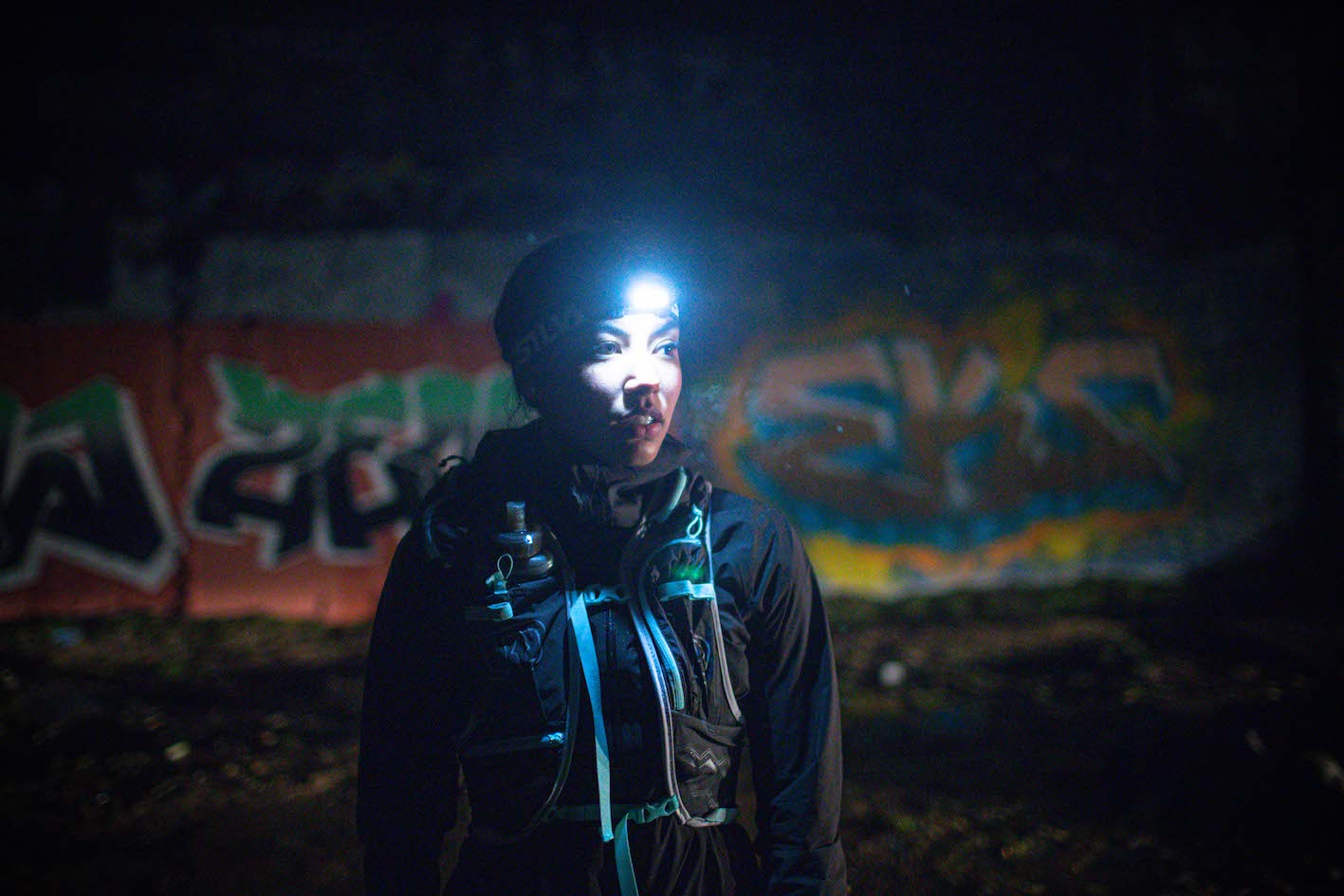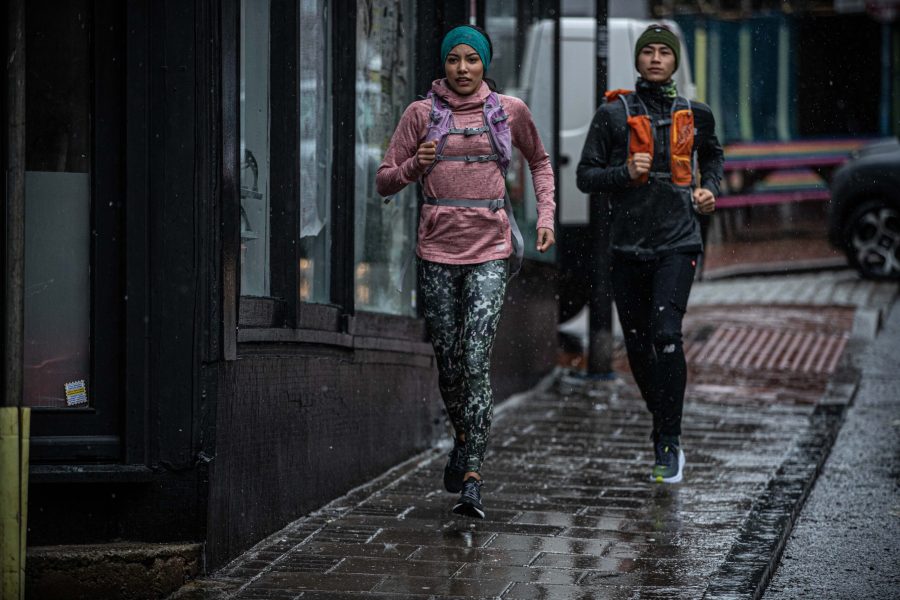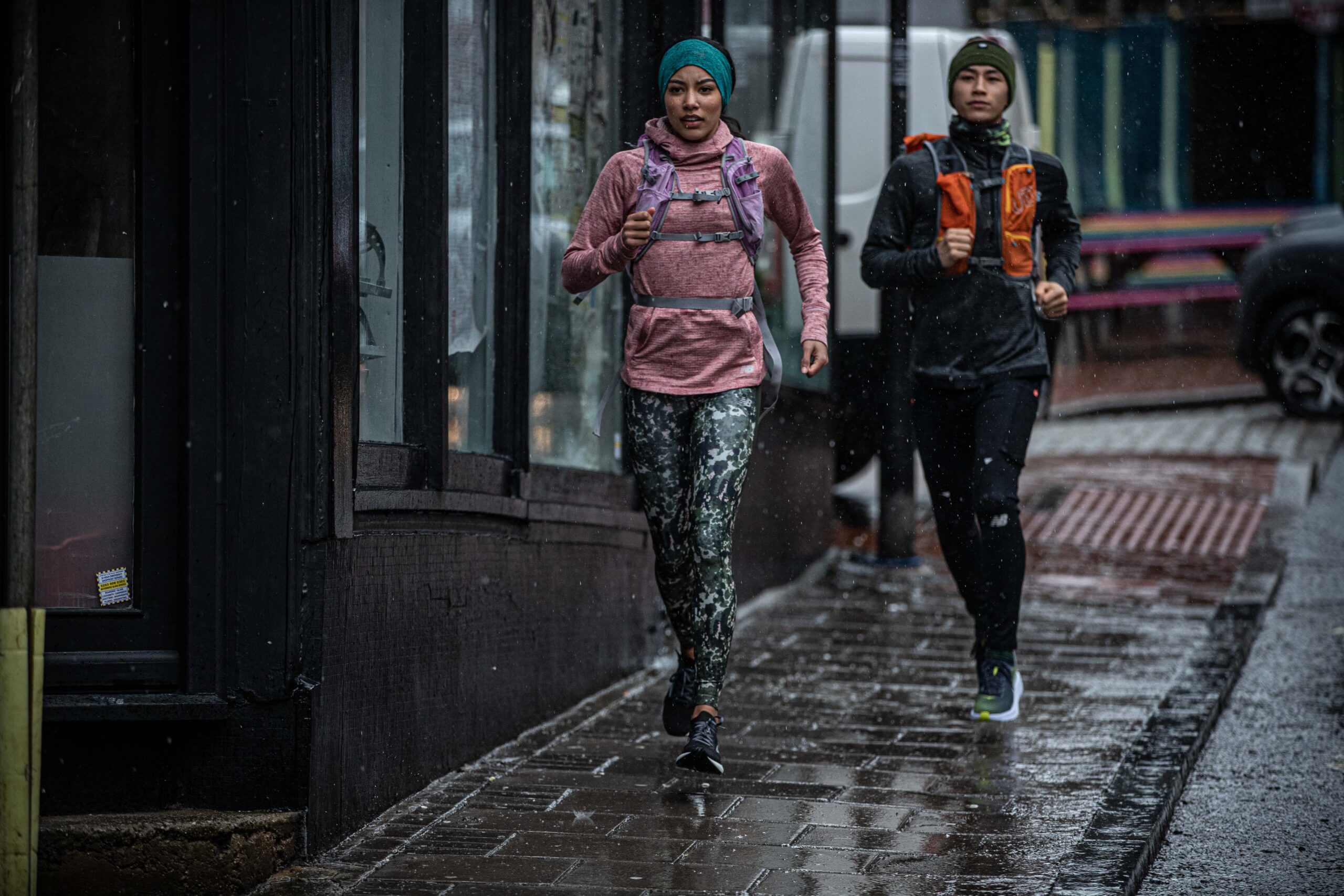Cold weather running take a bit more planning than just sticking your shoes on and a light jacket and heading out. To stay warm and safe, we speak to Steve Paterson, Head of People Development at running specialist store Runners Need.
Running is one of the most straightforward and accessible exercises to take up. Whether you hit the treadmill or the streets, all you need is a bit of kit and you’re ready to go. But if you’re new to the sport, the winter months can present a few challenges. Here are my top 10 tips for beginners setting off on a cold weather run.
Warm up and cool down
Warming up and cooling down is even more important for cold weather running. Warming up your muscles helps them work more efficiently, and reduces your risk of injury.
While it’s tempting to get going as quickly as possible to warm up, try some dynamic stretches or low intensity cardio (like star jumps) to get the blood flowing. Likewise, take the time to stretch and cool down after your cold weather run to help flush out any lactic acid and prevent soreness the next day.
Check conditions when cold weather running
While cold and rain are off-putting, they’re generally safe to run in. But icy conditions can be really dangerous for runners, so it’s worth thinking carefully about whether you’re prepared. If you do go out, try taking shorter steps and keeping your feet closer to the ground.
Stick to familiar routes
If it’s wet or dark you’re more likely to trip on an unexpected tree root or drain covering. When visibility is low, avoid new routes that might conceal hazards.
Consider running laps
Although running the same loop on repeat might get a bit dull, it means you’re closer to home and have an exit strategy should you find that conditions are worse than you thought, or if you injure yourself.
Check your cold weather running gear
Going into winter is a great time to check your kit. Make sure your trainers are in good condition, you’re wearing sweat wicking fabrics and you have some high visibility pieces for dark runs.
 Get your gait checked
Get your gait checked
If you haven’t done so already, take the time to get your gait checked by a professional. They will observe you running on a treadmill for about a minute and check how your foot lands as you’re running. They can then recommend the footwear that will support your feet the best, optimise your running performance, and provide the best grip on your usual running surfaces.
Find a run partner
Teaming up with a run buddy has safety benefits but can also help with motivation. You’re a lot likely to get out for your run on a cold day if you have someone counting on you.
Regulate your breathing
Breathing can sometimes feel more difficult in the cold so pay attention to your breaths and maintain a regular rhythm. Try inhaling and exhaling every three steps.
Start gently
If you’re inexperienced, build up your mileage very gradually. This will help you avoid injury and stay motivated – you’re unlikely to succeed long term if you’re aiming too high. However, if you’ve been running through the warm summer months, you might find running in cooler weather a little easier so consider upping your distances or aiming for faster speeds.
Layer up when cold weather running
Make sure you’re dressing appropriately for cold weather running. As a general rule, you need to dress for a temperature about 10 degrees warmer than the outside temperature. So if it’s 0 degrees outside, it will feel like 10 degrees on your run, so you’ll want a couple of sweat-wicking layers and potentially a waterproof jacket.








